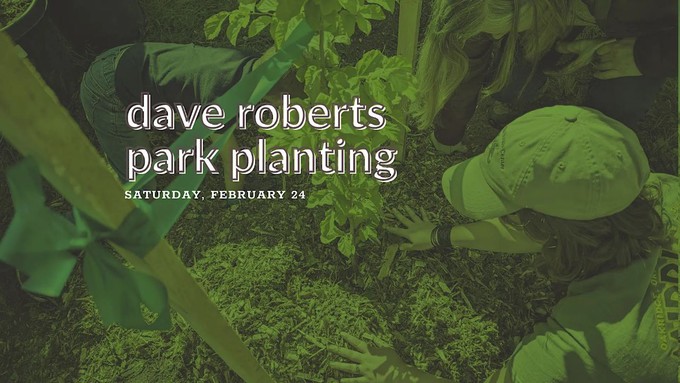
Registration is open for more neighborhood tree plantings in March and April; families welcome

Volunteers are needed to plant trees at Dave Roberts Park in Rancho Cordova. Courtesy of Sacramento Tree Foundation
Winter rain makes for soft ground. That makes February and March a good time to plant trees in the greater Sacramento area. When digging holes big enough for tree root balls, the job is much easier if the site isn’t rock hard.
The task also goes faster when there’s more people to dig the holes.
Saturday morning, Feb. 24, volunteers will plant lots of new trees at Dave Roberts Park in Rancho Cordova. Organized by the Sacramento Tree Foundation, this tree planting is part of a series to bring more shade to the area’s parks and neighborhoods.
“Planting more trees in this park will help increase the amount of shaded walkways, create more spaces to picnic under, and will help clean the air and water for years to come!” say the organizers. “We provide all the necessary tools and supplies to care for trees.
“Participants will receive a short, hands-on training on site. After learning the tools and techniques, participants will split up into groups and begin planting trees throughout the site.”
SacTree particularly encourages people who live or work near Dave Roberts Park to attend. “This event is open to the general public; you do not need any prior experience to join us and on-site training will be provided,” the foundation says. “Families with children are welcome.”
Attendance is free, but participants need to register in advance to receive an email with details and logistics. Sign up here: https://sactree.org/event/dave-roberts-park-planting/
Registration starts at 8:45 a.m., followed by a tool demonstration. Wear closed-toe shoes and appropriate clothing. Expect to get a little dirty. The job should be done by noon.
SacTree also plans more tree plantings in March and April. That includes: March 16 at Karl Rosario Park in North Sacramento; March 23 at Folsom Lake College; and April 6 in Sacramento’s River District Neighborhood. Registration is now open for all of those tree planting events.
Find details and links here: https://sactree.org/events/
Comments
0 comments have been posted.Sacramento Digs Gardening to your inbox.
Sites We Like
Garden Checklist for week of July 21
Your garden needs you!
* Keep your vegetable garden watered, mulched and weeded. Water before 8 a.m. to reduce the chance of fungal infection and to conserve moisture.
* Feed vegetable plants bone meal, rock phosphate or other fertilizers high in phosphate to stimulate more blooms and fruiting. (But wait until daily high temperatures drop out of the 100s.)
* Don’t let tomatoes wilt or dry out completely. Give tomatoes a deep watering two to three times a week.
* Harvest vegetables promptly to encourage plants to produce more. Squash especially tends to grow rapidly in hot weather. Keep an eye on zucchini.
* Pinch back chrysanthemums for bushy plants and more flowers in September.
* Remove spent flowers from roses, daylilies and other bloomers as they finish flowering.
* Pinch off blooms from basil so the plant will grow more leaves.
* Cut back lavender after flowering to promote a second bloom.
* It's not too late to add a splash of color. Plant petunias, snapdragons, zinnias and marigolds.
* From seed, plant corn, pumpkins, radishes, winter squash and sunflowers.